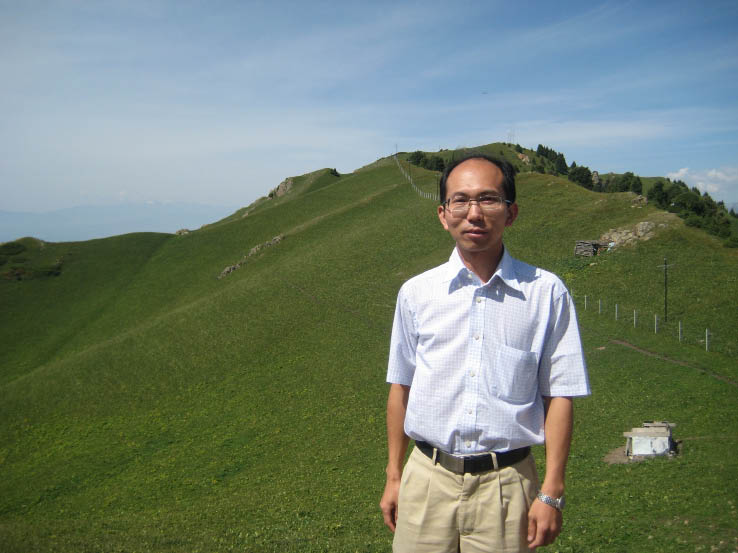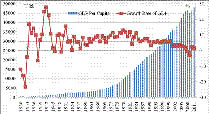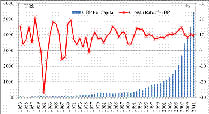Strong Growth Prospects for the Chinese Economy
By HU JIANGYUN

Hu Jiangyun is a researcher at the Development Research Center of the State Council.
FIVE years after the onset of the global financial crisis the world economy is finally revving up – a recovery led by emerging economies that include China. Tables 1 and 2 below show that, despite a slowdown compared with last year, the year-on-year and quarter-to-quarter growth rate of the Chinese economy still outpaces that of the U.S.
The potential for long-term growth of the Chinese economy is promising. Figure 1 shows that, starting from 1950, the U.S. economy sustained a half-century accretion. In 1942, per capita GDP exceeded US $1,000, and by 2008, the year the global financial crisis erupted, it had topped US $46,600.
The Chinese economy has maintained steady growth since the opening-up and reform policy came into effect. Per capita GDP has soared from US $114 in 1970 to US $5,439 in 2011 (see Figure 2). From historical and comparative perspectives, the 1997 figure of US $800 is around the same as that of the U.S. shortly after the Great Depression of the 1930s. Moreover, China’s 2011 statistic is only 11.4 percent that of the U.S. during the same year and the same as the U.S. figure in the late 1960s and early 1970s.
The Chinese economy gained strong momentum from its humble beginnings. From 1970 to 1990, China achieved average annual growth of 6.6 percent. Over the same period, that of the U.S. was 2.1 percent and the global rate was 2.4 percent. From 1990 to 2011 China’s annual growth averaged 9.3 percent, as compared with 1.7 percent in the U.S. and 2.6 percent worldwide.
International organizations are consistently bullish about China’s economic prospects. The Organization for Economic Co-operation and Development (OECD), for instance, forecasts an annual growth of 7.6 percent from 2013 to 2022 – well above the 2.51 percent of the U.S. and 1.85 percent of the EU.
Figures 1 and 2 imply a slow-down in China’s economic growth, attributable to the Chinese government’s decision to transform the economic growth pattern and achieve coordinated and sustainable economic, political, cultural, social and environmental development. Over past decades of rapid growth China has discerned certain flaws in the old growth pattern, notably low efficiency and damage to the environment. Its political, social, cultural and environmental development, meanwhile, lags behind economic growth, as apparent in social imbalances. This disparity necessitates an orderly, rationally devised mechanism to support interactive and coordinated economic, political, cultural, social and environmental development.
|
 |
| Figure 1: U.S. Per Capita GDP and U.S. GDP Growth |
Efforts to transform growth patterns started with readdressing the government-market relationship. Pilot reforms to the administrative review and approval system in eastern coastal areas that China initiated in the late 1990s reached the State Council – the Chinese cabinet – this year. In a bid to remodel government functions, the new leadership has cut by one third items subject to central government review and approval. Premier Li Keqiang announced at a videophone conference on May 13 the cancelation of 133 items concerning administrative examination and approval. A month later 32 more items were added to this list. In July, the State Council abolished the regulation on coal production permits, and amended articles pertaining to 25 administrative decrees. These moves are aimed at reforming governmental functions, building a more open and transparent government and giving a greater role to the market.
|
 |
| Figure 2: China’s Per Capita GDP and Chinese GDP Growth |
China is pressing ahead with urbanization, but with a different approach from that of Western countries. This is due to the huge numbers in the country that still live in poverty. China raised the poverty line of rural households in 2011 to RMB 2,300 of net income per head. Based on this new standard,China’s Sustainable Development Strategies Report of 2012 put the number of Chinese people earning less than that amount last year at 128 million. The 2013 UNDP Human Development Report acknowledges steady improvement in quality of life in China. Problems like the rich-poor gap, regional development imbalances and income inequalities nevertheless still exist. Of the 187 countries and regions assessed on the Human Development Index report, China ranks at No. 101.
China must therefore devise an urbanization path that enables it to advance head-to-head with industrialization, informatization and agricultural modernization, to stimulate economic growth, create jobs and facilitate reforms, and improve people’s livelihood.
China has meanwhile deepened reforms and heightened opening-up of its economy. A free trade zone is up and running in Shanghai, and a trial open inland economy model is underway in central and western provinces. Both are intended to promote fair market competition, stimulate trade and investment and generally enhance the Chinese economy.
Taken as a whole, as the government grows more adept at macro-economic regulation and control, China stands poised for sustained growth.

